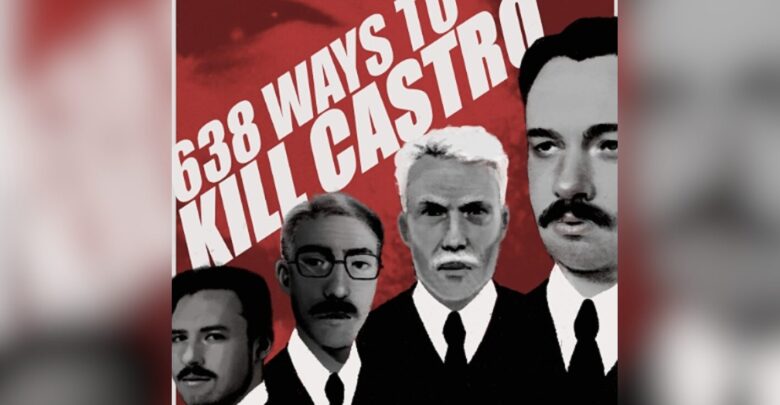2024 Fringe Festival Review: 638 Ways To Kill Castro
'638 Ways To Kill Castro' has some funny moments, but struggles to create a cohesive plotline.
 Supplied
Supplied638 Ways To Kill Castro, directed by Kathleen Weiss and written by Sebastian Ley, is a satire loosely based on the 2006 documentary. The documentary covers the Americans’ absurd attempts at killing Fidel Castro through Operation Mongoose. However, the play provided a fictional look into the lives of four Central Intelligence Agency (CIA) agents behind these murder plots.
Trench (Sebastian Ley) leads the operation, which also consists of the klutzy gadget-maker Pope (Samuel Bronson) and the more experienced agent, Goldwater (David Ley). Vandenberg (Patrick Lynn) is the newest addition to Operation Mongoose. He explains that he is there to keep their finances in check. In reality, Trench’s father is actively trying to dissolve the group. He has sent Vandenberg to expose the ineffectiveness of the operation.
The dialogue in this play really struggled. At times, the exchanges between Trench and Pope felt stiff and inauthentic. There was no natural flow of conversation. Many of the jokes fell flat because they were almost rushed out of the actors. This became most evident when the characters were arguing during the charades scene while acting out potential assassination methods. However, this scene did redeem itself with the absurd Fidel Castro ski mask that Trench forces Pope to wear.
At the beginning of the play, it felt like the script wanted to immediately remind the audience that it was in fact, a comedy, by cramming in as many jokes as possible. Unfortunately, they were pretty mediocre. Trench spilling his coffee at the beginning and blaming the janitor was a decent introduction to his character. However, the incident was simply not funny enough to drag on for as long as it did.
The writing for Goldwater’s character was definitely the highlight of this play — his deadpan delivery was brilliant. Goldwater’s nonchalant manner directly contrasted the overly anxious Pope. This distinction made for comedic exchanges between the two, like when Goldwater admitted to Pope that he would kill Jesus if it would get him better dental benefits.
Pope’s character arc had a satisfying conclusion. He finally confronted Trench who had been bullying him for his many mistakes while working for Operation Mongoose. Pope mastered mind control and stopped Trench from fighting Vandenberg. However, Trench’s character arc seemed to go nowhere because he failed to truly recognize his wrong-doing towards Pope. The play ended with a dance scene between Trench and Castro, which was comedic (the Castro ski mask made a return), but failed to really conclude anything.
The production during this play was perfectly executed, especially during the committee meeting scene. The use of lighting captured the intensity of the meeting. As each CIA agent struggled through their individual questioning, the production crew directed a blinding spotlight onto them. Furthermore, the lighting created a perfectly distorted and hallucinatory feeling during Pope’s nightmare scene and his LSD-induced mind control ritual.
My primary issue with this play is in the writing — everything dragged on for longer than it needed to. Many of the jokes were not as sharp as they could have been because the characters continued to ramble on for longer than necessary. The play could have had an impactful conclusion soon after the committee interrogation scene. Instead, it slowly trailed off into an overall unsatisfying ending.




